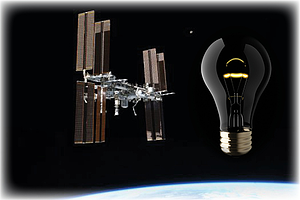
Given recent research proving that a comfortable classroom is instrumental to student performance, many companies are striving to keep up with demand for the latest in technology to improve the learning environment. Two such innovators are CREE, Inc. and Lutron Electronics, developers of automated LED technology for classroom lighting solutions. Recognizing that proper lighting has been tied to increased student performance, higher standardized test scores, and reduced fatigue levels, these companies have partnered to design one the most ground-breaking illumination systems in the world. Each brings their own expertise to the table, combining state of the art LED lighting and “smart” technology that sensors room activity and light levels.
- CREE LED Technology
A description of how CREE LED lighting works is central to understanding its advantages in educational institutions. The technology works by forcing electrical current through special energy conducting material. On the other end are light emitting diodes that become illuminated as part of the process. CREE excels at this innovative illumination solution, incorporating high efficiency lighting that’s eco-friendly and mercury free. LED technology comes with a low maintenance cost and, as such, is quickly replacing the wasteful incandescent bulbs and fluorescent bulbs of the past.
- Lutron Solutions for System Control
With an appreciation of how CREE LED lighting works to lower energy consumption and costs, you can see the benefits of programming its operations. Lutron has developed technology that enables users to gain control over their lighting, automating certain aspects of the solution while allowing for manual functions as necessary. The system incorporates sensors that measure occupancy in a classroom or read the illumination levels of natural light filtering in through the windows. These modules communicate with a ceiling mounted control box that dims or turns off the LED lighting in a room, thereby prolonging the life of the LED devices. Additional control boxes can be implemented that give users manual control to override the automatic operations.
- Partners in Luminary Innovation
CREE and Lutron recently partnered to coordinate efforts to introduce proper lighting in schools, resulting in improved student performance, teacher job satisfaction, and reduced energy costs. Lutron’s innovative “smart” technology is embedded into CREE’s pioneering LEDs to create the most advanced lighting solution available. Students and staff are exposed to higher quality illumination, decreased eye strain, headaches and fatigue. Studies have also shown how CREE LED lighting works to increase productivity and elevate alertness levels, especially in mid-morning and mid-afternoon when the human body's circadian rhythms cause grogginess.
At the same time, the product of the CREE - Lutron partnership has resulted in lowered energy costs for educational institutions where the technology has been implemented. Not only are electric bills lower, but the cost of broken bulbs and other maintenance expenses are reduced.
By combining the CREE's energy efficiency and high quality illumination LEDs with the innovative automation technology developed by Lutron, the companies have come together to create a superbly advanced lighting system. The benefits of installing these solutions in the classroom are an improved educational experience that's conducive to learning.

 If you’re really hoping for an answer to that question, we’re sorry to say that we’re going to have to disappoint you. At this point in time, not even NASA knows how many scientists it takes to change a light bulb in the International Space Station—but they’re working on it. Really!
If you’re really hoping for an answer to that question, we’re sorry to say that we’re going to have to disappoint you. At this point in time, not even NASA knows how many scientists it takes to change a light bulb in the International Space Station—but they’re working on it. Really!